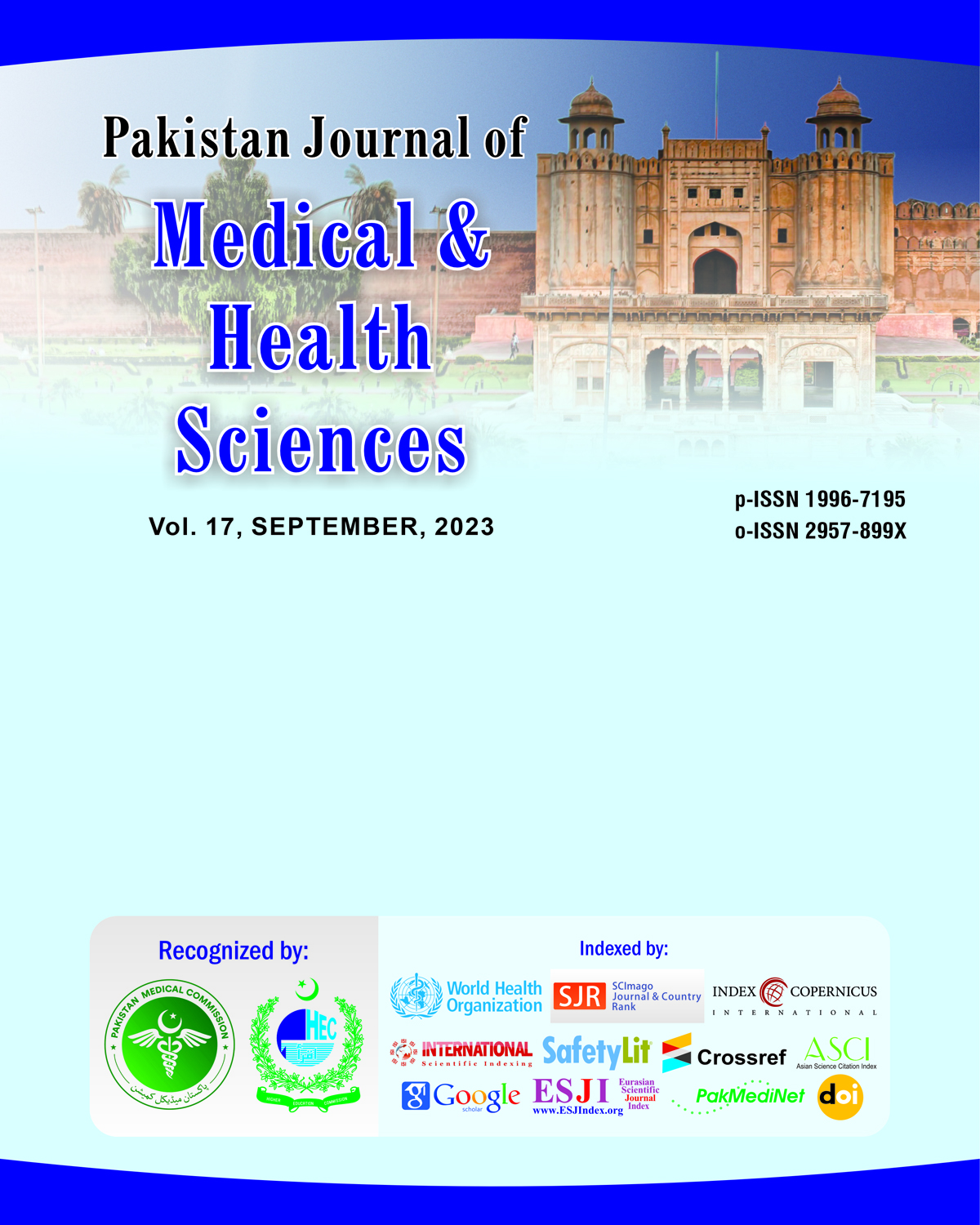Comparison of Point-of-Care Hemoglobin A1c testing with Central Laboratory methods for screening and monitoring Diabetes Mellitus in Resource-Constrained Settings
DOI:
https://doi.org/10.53350/pjmhs2023170945Abstract
Background: Hemoglobin A1C (HbA1c) is often used for evaluating long term glycemic control in patients suffering from diabetes. In resource-constrained settings, the availability and accessibility of diagnostic facilities are often limited. Point-of-care (POC) testing for HbA1c has emerged as a potential solution to overcome these barriers
Methodology: A cross-sectional study conducted at Bahawal Victoria Hospital in Bahawalpur from May 2022 to October 2022 for a period of six months following ethical review committee permission. This research includes 173 subjects. On the same visit, blood samples were taken for HBA1C measurement using both a centralized laboratory approach (Turbidimetric Inhibition Immunoassay, TINIA) and a point-of-care testing (POCT) method (Biohermes A1C EZ 2.0). Patients were placed into three groups based on their HBA1C levels: Group A (less than 5.6%), Group B (5.6%-6.7%), and Group C (more than 6.7%). Group C was divided into two categories: diabetics with adequate glycemic control (HBA1C < 7%) and diabetics with poor glycemic control (HBAIC > 7%). Data was analyzed by using SPSS version 24.0. P-values of ≤0.05 will be considered statistically significant
Results: The result has shown that study sample consisted of 173 individuals with a mean age of 51.2 years (±SD 5.4) with 98 males (56.64%) and 75 females (43.36%). The participants had an average BMI of 28.3 (±SD 5.6). Group A has 32, Group B has 44, Group C with good control has 52 and Group C with poor control has 45 participants. The mean TINIA measurement for these groups were 5.1 ± 1.13, 6.0 ± 0.93, 6.8 ± 1.40 and 10.3 ± 2.31 respectively. While the POCT results for these groups A, B,C with good and poor control were 5.2 ± 0.41, 6.1 ± 0.23, 6.7 ± 0.83 and 10.9 ± 1.78 respectively. The comparison results of these methods using the Spearman test (non-parametric data), a correlation coefficient (r) of 0.75, p<0.001 was obtained.
Conclusion: The findings of this study support the integration of point-of-care HbA1c testing into diabetes screening and monitoring programs in resource-constrained settings, offering a pragmatic approach to contain the growing burden of diabetes in Pakistan.
Keywords: Hemoglobin, Immunoassay, HbA1c, Diabetes, Correlation, Coefficient.
Downloads
How to Cite
Issue
Section
License
Copyright (c) 2023 Pakistan Journal of Medical & Health Sciences

This work is licensed under a Creative Commons Attribution 4.0 International License.


